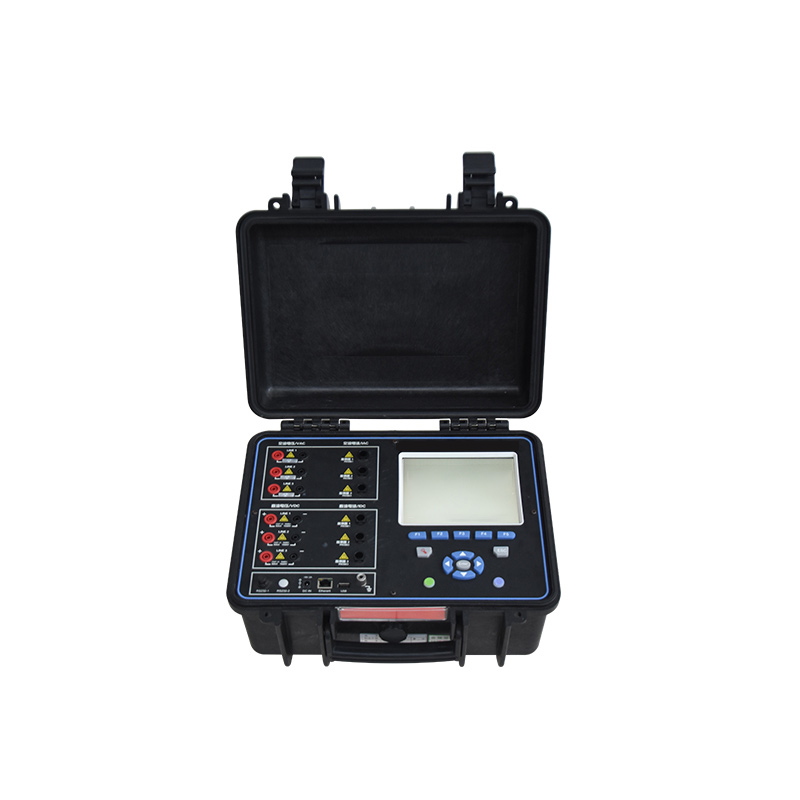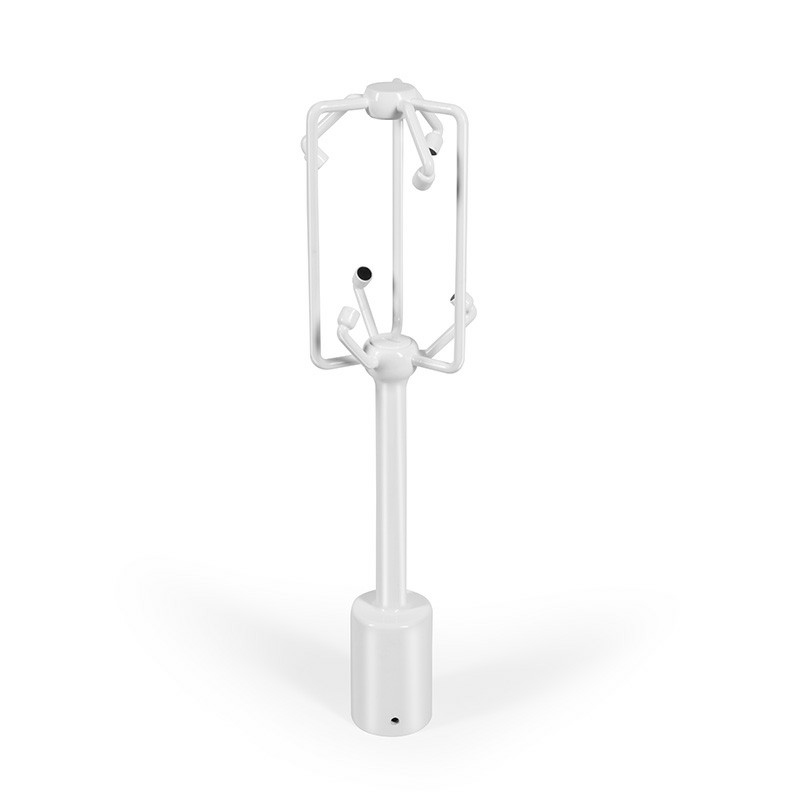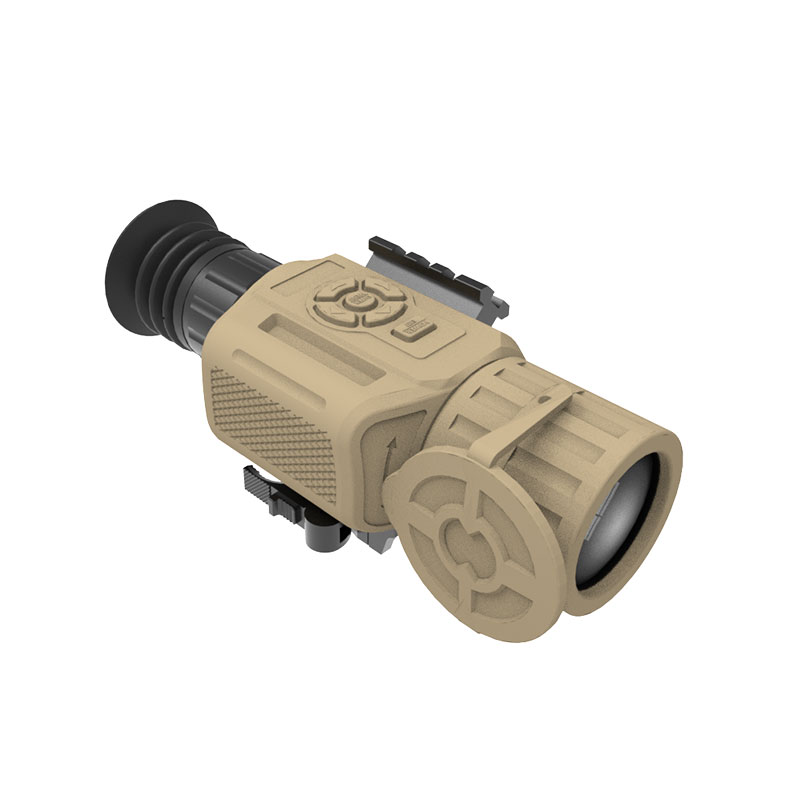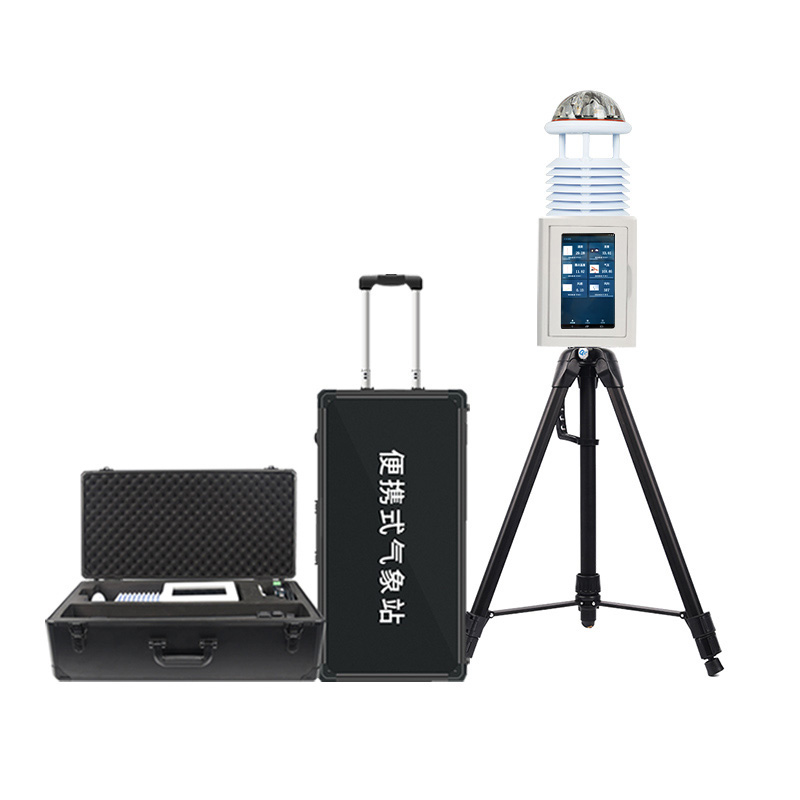Product
Recommended article
- One - Stop Dust Monitoring Solution
- How Forestry Weather Stations Bolster Forest Fire Prevention Efforts
- Discover the Power of Negative Oxygen Ion Monitoring System for Cleaner Air
- Comparative Analysis of Ultrasonic and Automatic Weather Stations in Meteorological Monitoring
- Breaking Through the ‘Last Meter’ with Online Dust Monitoring System
- Mastering Road Conditions with Road Weather Station
Contact us
Shandong Fengtu IOT Technology Co., Ltd
Sales Manager:Ms. Emily Wang
Cel,Whatsapp,Wechat:+86 15898932201
Email:info@fengtutec.com
Add:No. 155 Optoelectronic Industry Accelerator, Gaoxin District, Weifang, Shandong, China
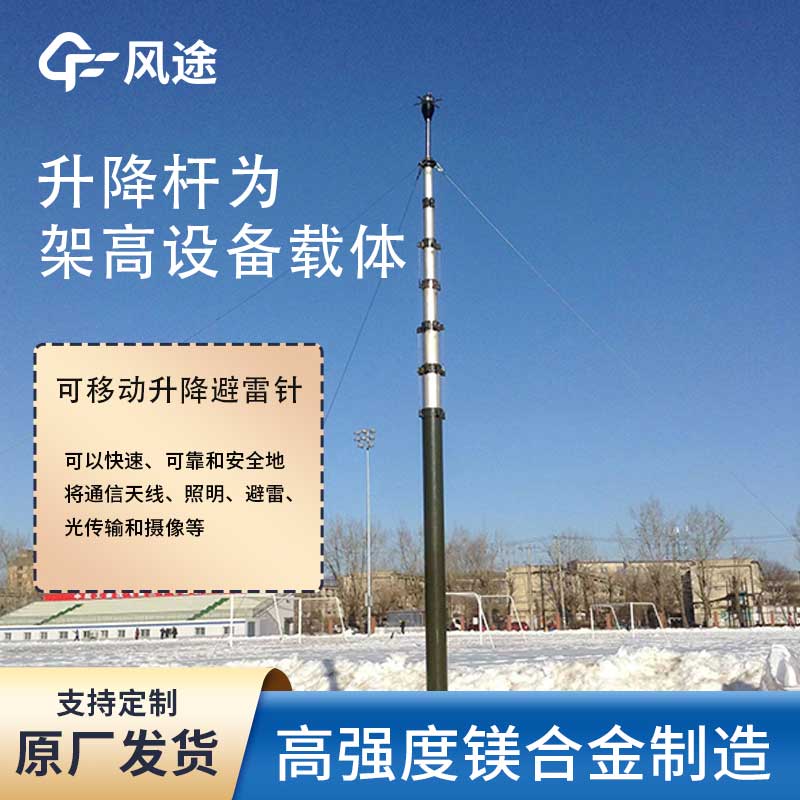
Manual adjustable lightning rod
Model:FT-SJ20A
Brand:fengtu
Related products
1.Scope of use of Manual adjustable lightning rod
Manual adjustable lightning rod is a powerful and easy to use lightning protection device with manual adjustable lightning Rod for flexibility and portability.It can be used to support the installation of various wireless communication antennas, lighting lamps, cameras, night vision devices, ordinary lightning rods and other equipment. It is especially suitable for the installation of various instruments with strong mobility and frequent movement, such as the installation of satellite signal receiving antennas and mobile radar lightning rods.
2. Applicable environment of Manual adjustable lightning rod
Working temperature: -45℃~+55℃ for electric type, ±55℃ for manual type. Maximum wind resistance 30m/s (with a solid installation foundation and cable pulling state), suitable for installation of various instruments that are frequently moved on a flat and solid surface. Such as the installation of satellite signal receiving antennas and mobile radar lightning rods. Solid ground (indoors and outdoors), interior and exterior installation of vehicles and warehouses, installation of ships and offshore drilling platforms.
3. Technical parameters of Manual adjustable lightning rod
| Product Specifications | 10 meters | 12 meters | 15 meters | 20 meters | 30 meters |
| Expanded Height | 10003mm | 12000mm | 15007mm | 20000mm | 30000mm |
| Closed height | 2089mm | 2200mm | 2624mm | 2700mm | 3200mm |
| Rod material | Magnesium Alloy | Magnesium Alloy | Magnesium Alloy | Magnesium Alloy | Four-key tube |
| Product Weight | 40KG | 50KG | 60KG | 61KG | 120KG |
| Drive mode | Manual | Manual | Manual | Manual | Manual |
| Wind resistance level | Level 8-10 | Level 8-10 | Level 8-10 | Level 8-10 | Level 8-10 |
| Rod body color | Army Green | Army Green | Army Green | Army Green | Army Green |
| lightning rod | 0.5m special alloy lightning rod tip | Stainless steel lightning rod | 0.5m special alloy lightning rod tip | Stainless steel lightning rod | 0.5m special alloy lightning rod tip |
4. Selection conditions of Manual adjustable lightning rod
1. Determine the maximum height, closing height, load weight, and windward area of the load
2. Determine whether to install on the ground, outside the vehicle, or inside the vehicle
3. Electric type: choose vertical or horizontal
4. Electric type determines the power supply used by the motor
5. Structural features and working principle of Manual adjustable lightning rod
The structure is compact, consisting of a lifting rod, a tripod, a hand crank, a wire pulling system, etc. The hand crank shaft, bevel gear, lead screw, nut, and wire rope are combined to transmit power to achieve the purpose of lifting. It adopts a "double extension mechanism", that is, each section of the movable rod is raised and lowered at the same time, with a fast speed, and the wire rope can be seen exposed after lifting. It can be self-locked at any height position and will not slide down.
6. Manual adjustable lightning rod installation requirements
1. The lifting lightning rod must be installed on a flat and hard foundation to ensure that it does not sink or tilt after bearing the load.
2. The load of the lifting lightning rod is not allowed to exceed the specified weight. The load must act on the axis of the rod. Asymmetric loads that deviate from the axis are prohibited from causing the lifting lightning rod to tilt or bend.
3. The lifting lightning rod must be vertical to the horizontal plane, and the allowed inclination is no more than 0.5°.
4. When the wind speed exceeds 14m/S, a guy wire must be used for erection or lifting.
5. The closed lock hook must be removed before raising the lifting rod.
6. The fasteners that secure the load must be tightened before lifting.
7. It is strictly forbidden to hit or bump the rod during use, installation or transportation to prevent deformation of the rod.
8. If any abnormal phenomenon such as lifting is not flexible or stuck occurs during the lifting process, work should be stopped immediately, and the cause should be found out and the fault should be eliminated before operating again.
9. Remember that during the lifting and lowering process, the short pull wire of the three-layer pull box that pulls the fixed tube must be in the locked state, see Figure 1 for details of the locked state.
7. Ground installation, lifting and cable pulling of Manual adjustable lightning rod
1. Choose a flat, hard, open site that can meet the requirements of wire nailing and ground nailing, that is, the site should be a circular area greater than or equal to R=12.6m.
2. Refer to Figure 2 to install the upper hinge, legs and diagonal braces onto the lifting rod and then install the latch.
3. Adjust the pull-wire lock pins of the pull-wire box to the unlocked state (i.e. pull up the lock pin handle and rotate it 90° so that the lock pin handle boss is out of the lock body groove).
4. Hang the long, medium and short pull wire hooks of the pull wire box on the upper, middle and lower pull wire holes of the lifting rod respectively.
5. Place the load on the lifting rod and tighten the fixing screws and remove the closing lock hook.
6. Stand up the lifting rod and hold it, then unfold the legs, pull the telescopic rod lock outward and pull the telescopic rod outward until it is in place and lock it.
7. Place the support plate under the support leg and rotate the adjusting bolt to fine-tune the support leg so that all three legs are supported and the lifting rod is in a vertical position.
8. Align the wire hole on the top of the lifting rod, take the lifting rod as the center, and nail three ground nails into the ground with a radius of 12.6m, with the ground nail hanging rings facing the lifting rod.
9. Hang the pull box hooks of the three pull boxes on the three ground nail hanging rings respectively.
10. Adjust the short wire lock pin of the wire pull box to make it in a locked state (i.e. pull up the lock pin handle and rotate it 90° so that the lock pin handle boss enters the groove of the lock body). Insert the wire pull box crank into the short wire crank handle jack of the wire pull box, rotate the wire pull box crank clockwise, tighten the wire at three points at the same time, and fix the lifting rod in a vertical position.
11. Unscrew the hand crank shaft cover, insert the hand crank handle onto the hand crank shaft, and evenly crank the lifting rod hand crank clockwise to raise the lifting rod. Release the pull wire while raising the lifting rod, and designate a special person to observe the verticality of the lifting rod, and instruct the operator of the pull box to loosen or tighten the pull wire as needed to keep the lifting rod vertically raised. When you see the red mark line on the lower part of the second section from the bottom or feel that it cannot be shaken, the lifting rod has been raised to the maximum height.
12. Adjust the long and middle wire lock pins of the wire pull box to put them in the locked state, insert the wire pull box handle into the long and middle wire pull box handle jacks respectively, rotate the wire pull box handle clockwise and hear a clicking sound, tighten the wires at three points at the same time to fix the lifting rod in the vertical position.
8. Lowering and disassembling the Manual adjustable lightning rod
1. Turn the hand crank counterclockwise to slowly lower the lifting rod. The operator of the pull box follows the pull wire and
The observer instructs to adjust the pull wire to keep the lifting rod descending vertically until it falls into place.
2. Hold the lifting rod, remove the pull box from the ground nail and then retract the leg telescopic rod inward.
3. Remove the legs and diagonal braces and lower the lifting rod.
4. Remove the load, remove the pull wire hook, then hang up the closing lock hook and tighten the closing lock, etc.
9. Maintenance and care of Manual adjustable lightning rod
1. After the lifting rod is used in the rain, it should be dried before being lowered to the closed position.
2. When the lifting rod is closed and parked in the open air, a protective cloth cover should be put on to prevent rain and dust from entering.
3. If it is not used for a long time, lift it up to dry once every half a month in the rainy season; lift it up to dry once every month in the non-rainy season.
4. For long-term outdoor lifting poles, check the erection of the lifting poles after strong winds or once a month. The pole body should not be tilted or deformed, and looseness is not allowed. If any problems are found, eliminate them in time.
Related article
-
How to choose a dust and noise monitor?
2024-07-16 -
Agricultural Weather Stations, making farming more modern and smarter
2024-08-16 -
There are two types of handheld meteorological instruments
2024-01-29 -
Highway Visibility Detector for Enhanced Safety
2024-08-23 -
Local Air Quality Soars as Dust detector Drives Effective Pollution Control
2024-12-06 -
Negative Oxygen Ion Monitoring System Builds Scenic Image
2024-04-16 -
Dust monitoring system installation specification
2024-06-11 -
Introduction to the fog warning and monitoring system
2024-06-19


 Get a Free Quote
Get a Free Quote